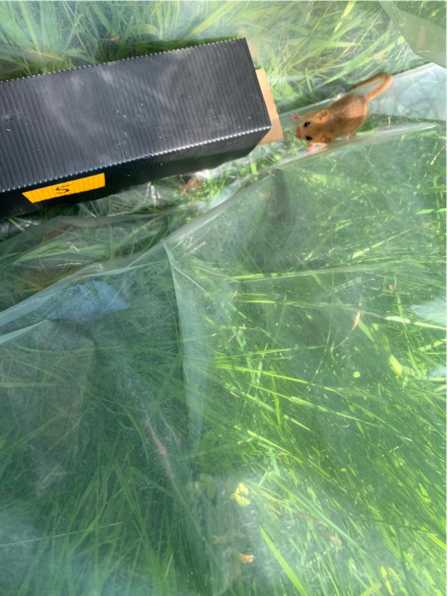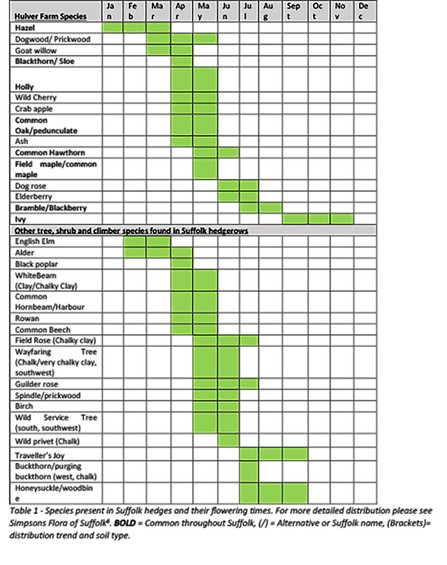The farm advice team recently ran an event; “Hedges, edges, and pollinators” at Hulver Farm in South Elmham. This was an event for farmers and land managers who want to understand the importance of traditional field edges and are interested in improving their margins and hedges for nature.
Farm edges - the hedgerows, ditches and margins - are an essential component of UK habitat. A hedge can provide food, refuge, and/or breeding habitat for over 500 plant species, 1500 insects, 60 birds and many of our native mammals.
The Farmland Wildlife Advice team discuss hedgerows on almost every visit we make to a farm. Not only can improving a hedge be a simple task, but sometimes, it can take less work and therefore save both time and money.
An ideal hedgerow is connected to other hedges, diverse in native species, trimmed every three years, coppiced every fifteen, interspersed with standard trees, exhibits a thick base, and is complimented with a species-rich grass margin. Though it might seem like a lot of work, the management can be relatively easy.
Hulver Farm cut their hedges only sparingly and coppice them on rotation which creates wonderful hedges at a range of growth stages across the farm. Reducing hedgerow cutting frequency on hawthorn hedges from every year to every three years can result in 2.1 times more flowers and a 3.4 times greater berry mass over 5 years5.
Historically, hedge removal has been encouraged. Intensification of farming systems, due to government policy and market pressures, has resulted in 50% reduction of hedgerow total length since 19453. But now, the scientific community and government have recognised the importance of the farm hedgerow. DEFRA now supports farms in planting, coppicing, laying, and gapping up hedges through Countryside Stewardship schemes capital grants which can be applied for without a stewardship agreement at any time of the year.
Not only are hedges a fantastic habitat, providing food and nesting sites, but they also act as an animal ‘highway’. Many species travel along hedges allowing the pockets of species living in isolated habitats to intermingle and become a stable population. If you think about dormice, for example, they generally avoid the ground, so non-gappy hedgerows are essential to travel from one woodland to another.
On my family’s farm, we recently had a survey, where, rather excitingly, we found dormice in a hedge which was coppiced and gapped up with hazel four years ago. There had never been any records of dormice in this location before so it would seem the coppicing and species diversification scheme has added half a hectare of connecting habitat for the dormice without taking any land out of production.


